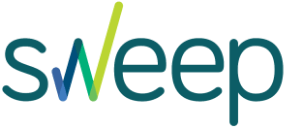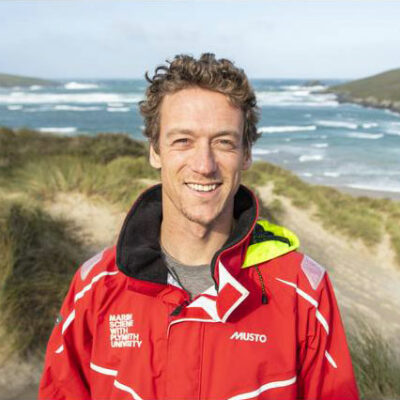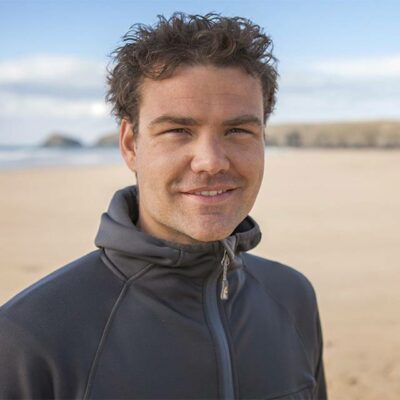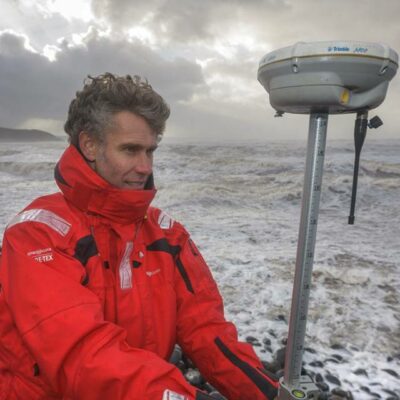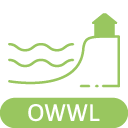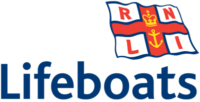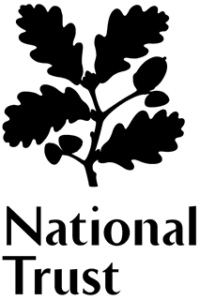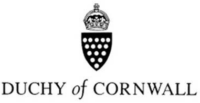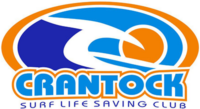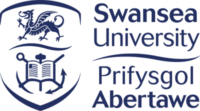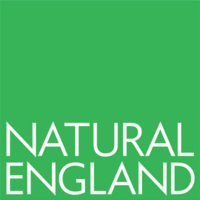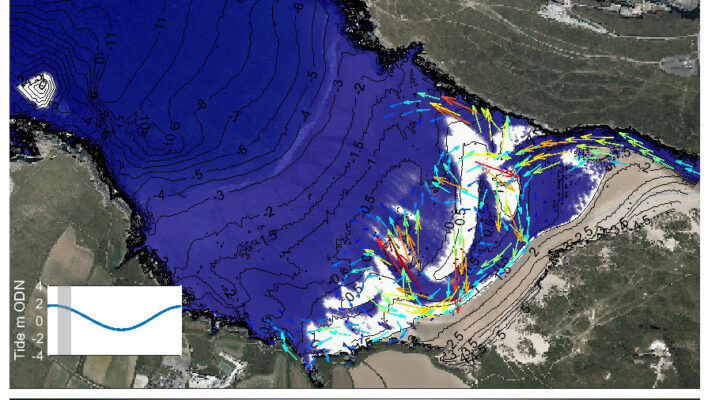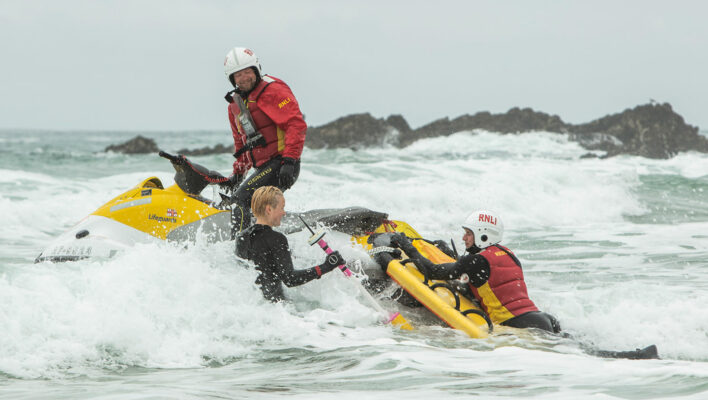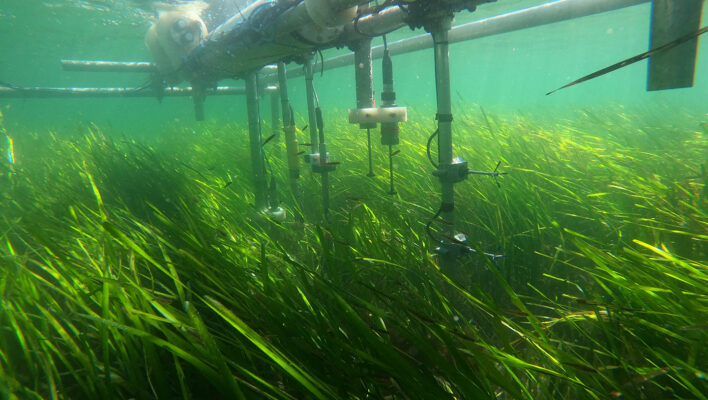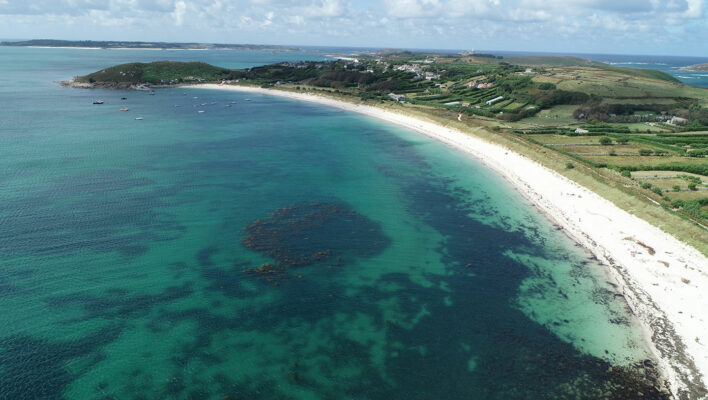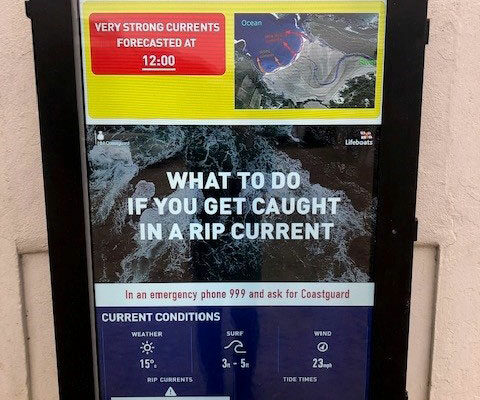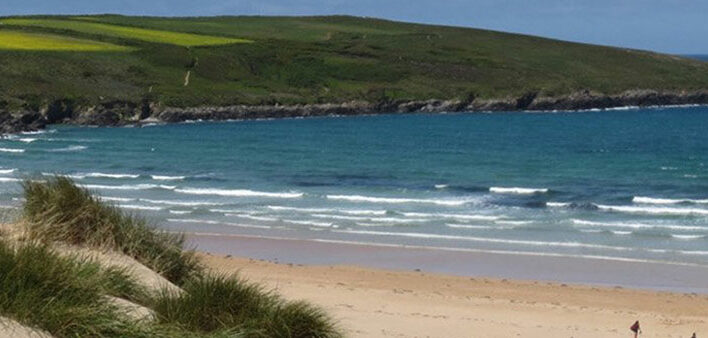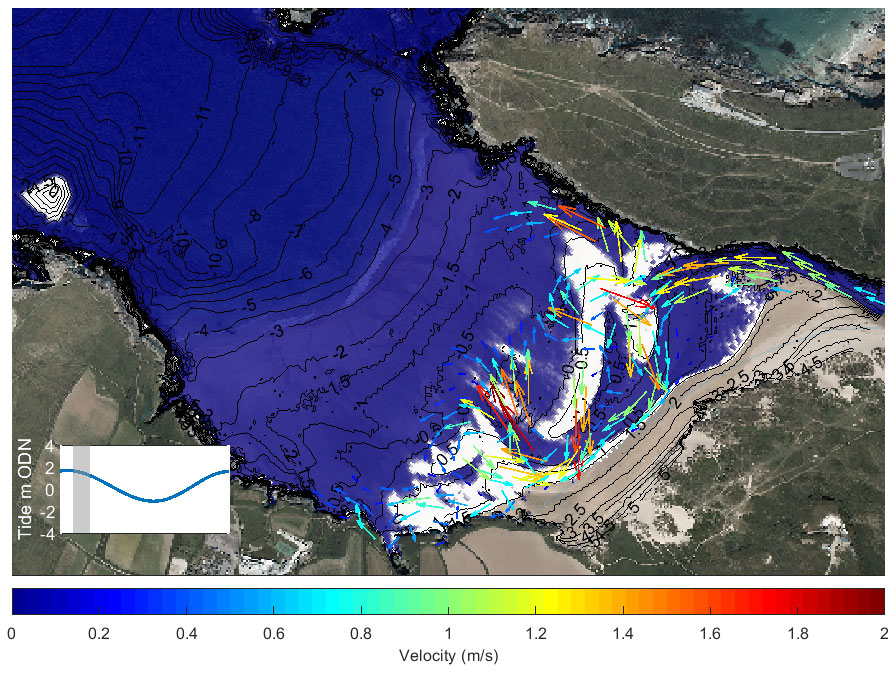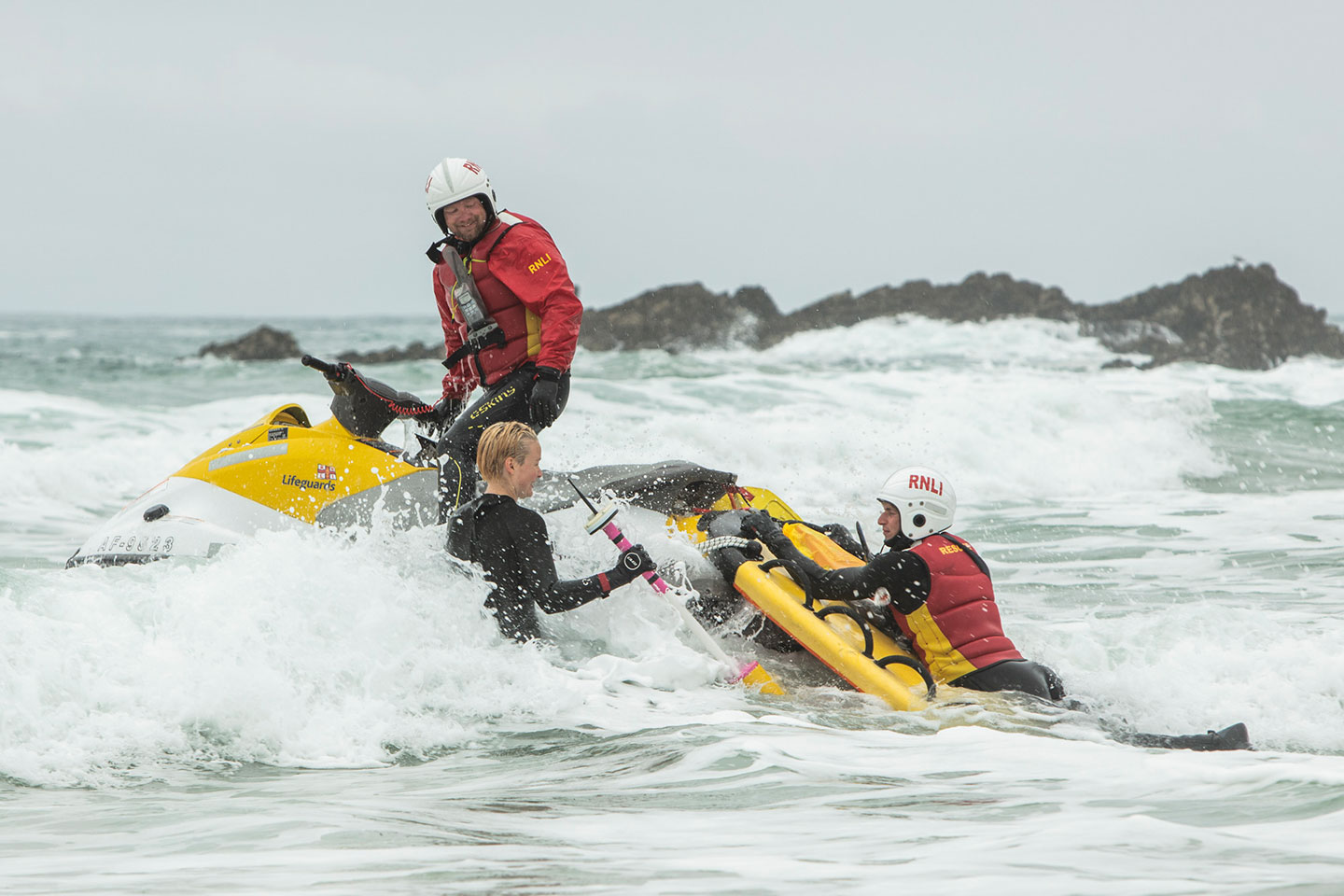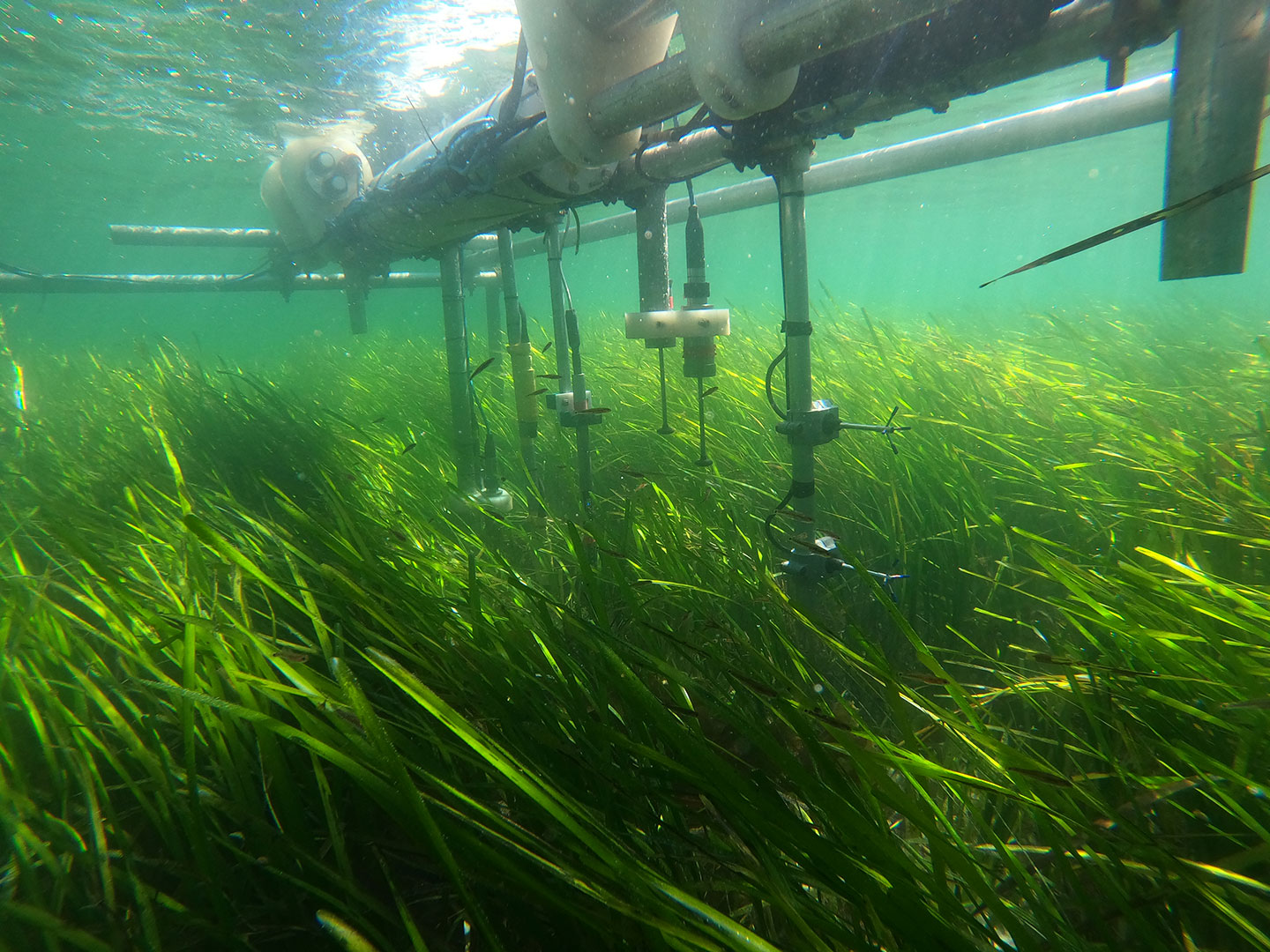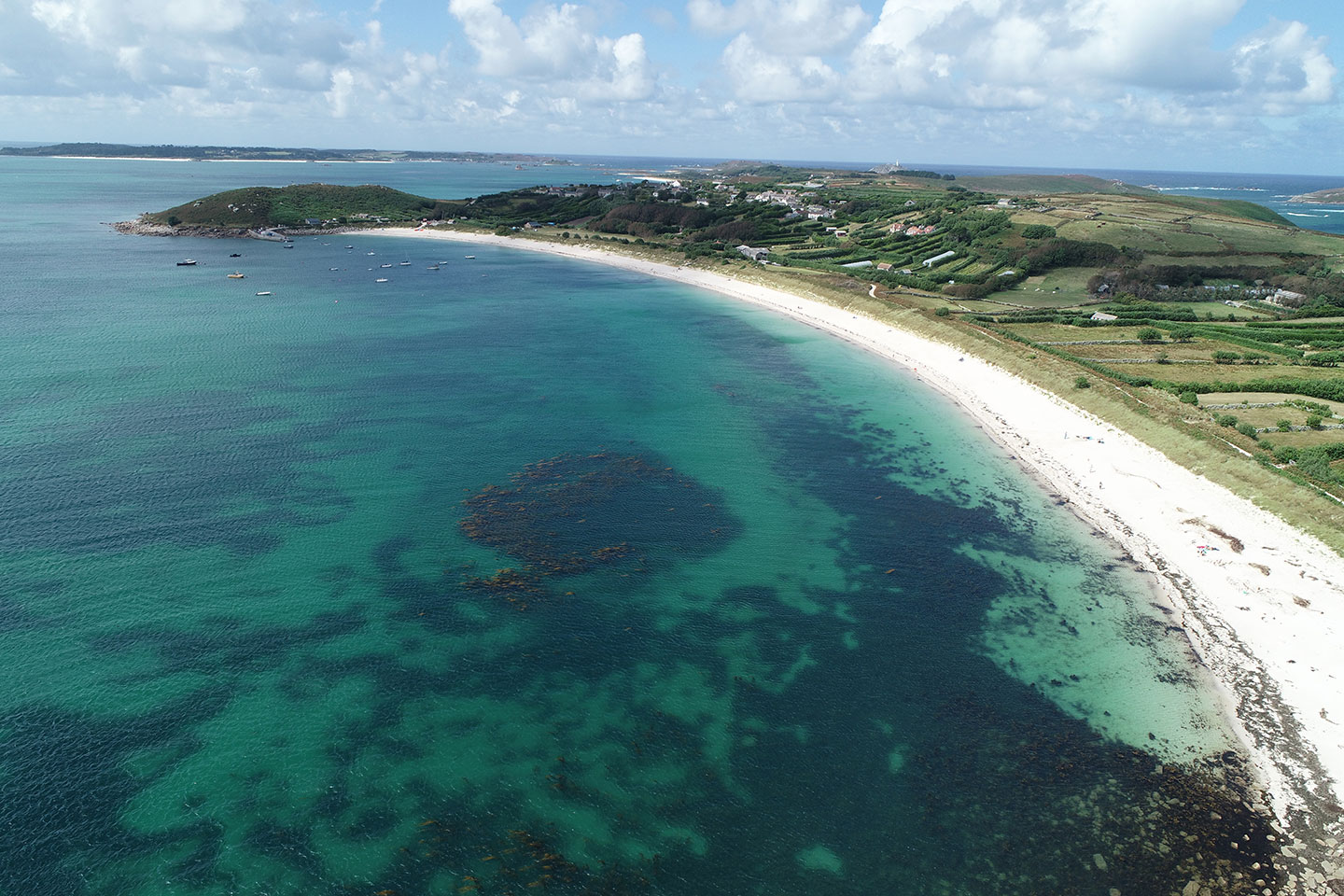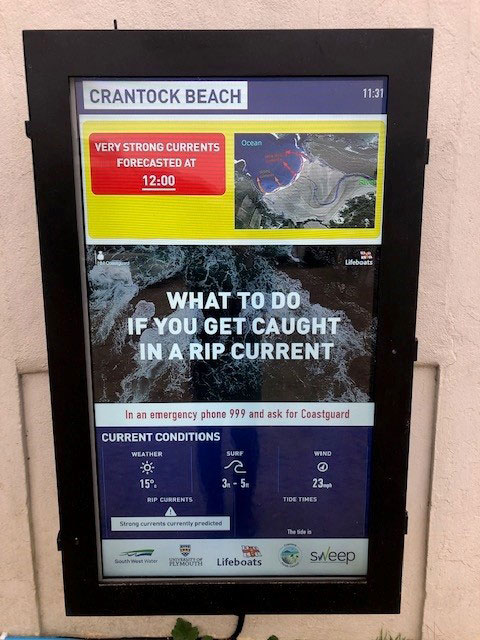Project team
Why it matters
SWEEP’s localised OWWL models have been used to tackle a variety of issues including:
- Crantock beach safety – Crantock is a popular beach on the north coast of Cornwall that has several significant bathing hazards, including rip currents, estuarine currents, headland boundary rip currents, and powerful breaking waves. The RNLI have been at Crantock since 2001. They have seen a steep rise in safety incidences with rescue and incident assist figures of less than 40 pa in 2014, to over 190pa in 2018; including two fatalities when lifeguards were not present. The lifeguard service is under increasing pressure and is keen to benefit from new innovations that deliver improved hazard data, and more effective methods of communicating this to the public, to enable better decisions about how to use the water safely.
- Isles of Scilly seagrass restoration – Seagrass beds are hugely important from a natural capital perspective. Not only do they harbour a wide variety of wildlife, they provide vital ecosystem services such as carbon storage. Capturing carbon at a rate 35 times faster than tropical rainforests, they are one of the most important natural solutions to the climate crisis. However, seagrass has declined drastically during the last century. Much of this is due to increased human disturbance such as pollution, dredging, mobile fishing gear and coastal development. The Isles of Scilly, are home to the main surviving UK seagrass habitats but even these are under threat, declining in both extent and quality.
Partners
This SWEEP project is exactly the sort of work RNLI like to align with. We’ve been impressed not only with the well-researched, cutting edge science the team have brought to this forecasting tool, but the professional way in which they have thoroughly tested and validated the data with local knowledge and experience, and worked with us to track and evidence impact.
Adrian Carey, RNLI
What we did
- Crantock beach safety – Working closely with the RNLI, Crantock Steering Group and wider community groups, the SWEEP team delivered daily hydrodynamic bespoke forecasts for Crantock Beach (providing up to 5-days pre-warning of peak bathing hazards) and forecast outputs for potential public-facing usage. Drawing on these, and working with the wider project team, SWEEP contributed to the development of new innovative digital public-facing beach hazard warning signage now installed in Crantock’s car park. See the live digital sign feed here.
- Isles of Scilly seagrass restoration – Working with the University of Swansea, Natural England and the Environment Agency, we developed a bespoke Operational Wave and Water Overtopping (OWWL) model encapsulating the Isles of Scilly. This provided insights into the wave climate outside, and within the interior of, the archipelago, as well as a characterisation of hydrodynamics and bed shear stresses. The outputs from the modelling work were fed into the Seagrass Habitat Suitability Modelling performed by Swansea University.
Impacts & benefits
- 1. Crantock beach safety – our work with the RNLI and wider Crantock partners has been truly ground-breaking and has delivered a wide range of impacts:
- New knowledge and built capacity – the OWWL model has essentially ‘automated’ a lifeguard’s brain by providing the bathing hazard foresight of an experienced lifeguard up to 5 days ahead; accessible to the public and beach safety champions, especially when lifeguards are off-duty.
- Informed attitudes and cultures – SWEEP’s forecasts have boosted confidence in the current RNLI Crantock service. It has also catalysed new ways of thinking about how best to deliver ground-breaking public-facing beach safety messages, especially in the mornings and evenings when lifeguards are off duty and risks for water users are high.
- Informed and enhanced RNLI practice, ultimately saving lives – SWEEP’s work at Crantock has contributed to the fast-tracking (delivered in 6 months, following 5 years of discussion) of this ground-breaking intervention delivering public-facing, digital beach hazard messaging for safer use of the sea. The establishment of the Surf School and Crantock Surf Club WhatsApp Group contributed to 31 ‘out of hours’ rescues and assists, and 91 ‘out of hours’ advisories during the Crantock 2021 season.
- An exemplar of an innovative community approach to lifesaving – Crantock’s Beach Safety Plan now includes digital signage as part of its suite of water safety interventions. Following further impact evaluation, and product development, the RNLI will consider incorporating this into organisational strategy, as part of a blended water safety service for other sites around the South West and UK. Cornwall Council have committed further funding to extend the lifeguarding season at Crantock by two months.
- Isles of Scilly seagrass restoration – we provided key information for informing strategic decision making for the restoration or future planting of seagrass. We also highlighted to Natural England the importance of using high-resolution wave models that effectively capture physical wave processes (such as the OWWL), when assessing potential sites for seagrass habitat restoration, thus ensuring they will be key to informing and strengthening seagrass research and restoration projects in the area and beyond.
SWEEP has played a pivotal role in this innovative approach to water safety at Crantock and it has already significantly improved the RNLI service here. We are committed to further refining, evaluating and, we hope, rolling-out this work going forward.
Steve Instance, RNLI
Looking to the future
Continuing to build on their strong partnership with SWEEP, the RNLI are committed to continue: strengthening local community water safety collaborations; developing, monitoring and evaluating the impact of Crantock’s digital signage on people’s behaviour; further sharing Crantock learning with wider RNLI colleagues, with the potential for this approach to become part of RNLI future organisational strategy. As a world-first, it is anticipated that this SWEEP-underpinned approach will impact more widely on the interventions employed by other key stakeholders around the world tasked with the safety of beach users.
